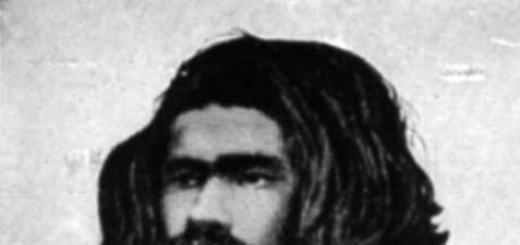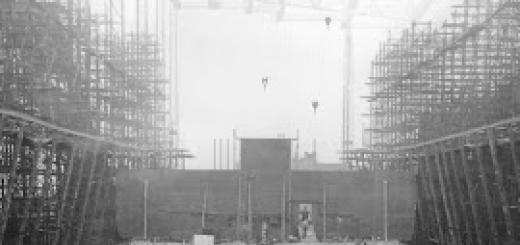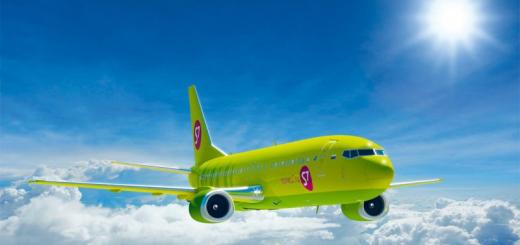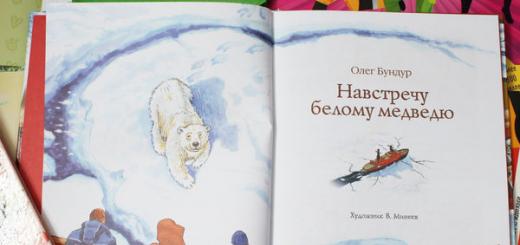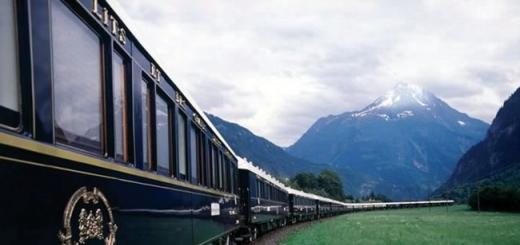Pseashkho (Pseashkha) - mountain range in the Western Caucasus, 20 km from the village of Krasnaya Polyana, in the upper reaches of the rivers Urushten, Malaya Laba, Pslukh, on the territory of the Caucasian Natural Biosphere Reserve. Belongs to the Main Caucasian Range. 9 peaks of the massif reach more than 3 thousand meters in height. The toponym "Pseashkho" is translated from the Adyghe as "abundant mountain", apparently due to the fact that several rivers fed by glaciers originate on the slopes of the massif. On old maps they often wrote "Pseashkho", on modern ones topographic maps began to write "Pseash-kha": Sev. Pseashkha, Yuzh. Pseashkha, Pseashkha ridge, Pseashkha glacier, per. Pseashkha. Modern official maps also have the following names: Kholodny camp, r. Kholodnaya, Kholodny glacier, Marble town, r. Pure, r. Mal. Laba, r. Rumor. Some of the names were introduced by the famous geographer Yu.K. Efremov: Zap. Pseashkho, Kamenny Zamok, Kozhevnikov Peak, Bzerpi Peak. Peak Sugar Loaf or Sugar Pseashkho is named by the inhabitants of Krasnaya Polyana. The remaining names are given by employees of the Caucasian Reserve, tourists, glaciologists: r. Mutnaya, Iholchaty Peak, per. Builder (or Builders), trans. Oilman, trans. Marble, Marble glacier, Sakharny glacier, Pslukhsky glaciers (Upper, Middle, Lower), Cold Western glacier, Cold Middle glacier, etc.
The Pseashkho massif is bounded from the west by a trough valley with the Pseashkho pass (2014.2m, n/c). This five-kilometer valley, about 500m wide, was worked out by an ancient glacier, which does not exist now. It stretched in the direction of yuyuz - sv. The longitudinal slope of the valley is so small that the passage of the pass point (pass Pseashkho) can be overlooked.
From the southwest, the Pseashkho massif is bounded by the valley of the Pslukh river, from the east by the valleys of the Malaya Laba and Chistaya rivers, from the north by the valleys of the Kholodnaya and Marble rivers. The southern end of the massif can be considered the Aishkha Pass (2401.5 m, n / a), the northern end is the Marble Pass (about 2800 m, 1B *).
The Pseashkho massif is a complex mountain junction with ridges of different directions and peaks from two and a half to three and a quarter kilometers in height. It is characterized by sharp alpine landforms: rocky narrow ridges, steep slopes and walls, peaks in the form of towers, peaks, battlements. The geological structure of the massif is complex. The massif contains rocks of different ages: gneisses, shales, marbles, conglomerates, sandstones, tuffs, porphyrites.
The Pseashkho massif from the west, from the Pseashkho pass (2014.2m, n / a) begins with a steep spur adjacent to the Western Pseashkho peak (2899.8m). This peak is a node from which spurs depart: a short southwestern and a two-kilometer northern one with peaks of 2627.8m, 2609.1m and 2629.4m. East of Zap. Pseashkho stretches a 3.5-kilometer high jagged ridge with peaks: 2822.0m, 3065.2m, Uzlovaya (about 3196m) and South Pseashkho (3251.2m). On the northern slopes of this ridge there are several glaciers and peaks: Razdelnaya (2700.5m) and Stone Castle (2556.0m).
From South Pseashkho (3251.2m) a sharp rocky ridge stretched to the northeast to the highest point of the entire massif - Mount North Pseashkho (3256.9m). This section of the ridge has a length of 775 m and breaks off to the north-west to the Kholodny glacier with an almost sheer half-kilometer wall.
From Northern Pseashkho (3256.9m) the ridge descends to the east. The small eastern shoulder of the peak abruptly breaks down and, after a deep notch, rises sharply upwards in the form of a rocky tower with sheer walls and a flat top (150 m from the main peak). Further, three more peaks rise on the ridge, significantly inferior in height to the tower. After the third summit, the ridge descends to the north and northeast to the Marble Pass (about 2800m, 1B*). At 750 meters to the northeast of the Marble Pass rises Azurit peak (3012.8 m, 1B), named so by A.F. Brikalov, who found outcrops of this mineral at the top.
From the top of the Northern Pseashkho (3256.9 m) two spurs depart. The short, steep northern ridge cuts deep into the Marble Glacier, here the division of the glacier into western and central parts is planned. The northwestern ridge also goes down steeply, bordering the western edge of the Marble Glacier. After the saddle, which is the upper reaches of the couloir, along which stones constantly fall onto the Kholodny glacier (for which this couloir received the nickname "garbage chute"), the spur rises sharply upwards with two sharp rocky teeth. These teeth are clearly visible from the Kholodny camp. The western prong has a mark of 2936.4 m, the eastern prong is 30-40 meters lower. Further, the spur descends to the northwest, dividing the basins of the Kholodnaya and Marble rivers.
Let's go back to Mount South Pseashkho (3251.2m). At 0.5 km to the west of this mountain is the peak of Uzlovaya (3196m) and, further to the south, Uzlovoe Shoulder (3192m). From the Uzlovy Shoulder, the ridge with a sharp decline goes south-southeast to the Stroitel (or Builders) pass with a height of about 2815m (1B) and then with a sharp rise to the junction, from which the ridges depart to the west and east. At 250m to the west of the junction is the peak of Sugar Pseashkho (3188.9m) or Sugar Loaf Peak with a 2-kilometer spur extending to the west. This peak from Krasnaya Polyana looks like a beautiful sharp peak. Whitened with winter snows, it really resembles a sugar cone (in the old days, refined sugar was produced in the form of “sugar heads” of a conical shape, hence the name of the peak).
From the node mentioned above, to the east, a ridge departs to the peak of Zeleny Klin (3164.4 m) and further to the southeast and south, and after 1.4 km it comes to the nodal mark of 3004.2 m, to the east of which Kozhevnikov Peak, 3070 high, rises 325 m, 6m (the peak is named after the botanist A.V. Kozhevnikov). From the Kozhevnikov Peak to the north-east and further to the east, a spur extends, ending with a peak of 2936.2 m. The length of the spur is about 1 km. From the nodal mark 3004.2 m the ridge goes south to the Aishkha pass (3.7 km). In addition to the ridges described above, in the Pseashkho massif there is a one and a half kilometer rocky ridge with a height of more than 3000m with peaks of 3154.8m and 3168.5m.
This ridge separates two branches of the Pseashkho glacier (glaciers No. 35 and No. 36 according to the Catalog of Glaciers of the USSR). Peaks 3154.8 m and 3168.5 m and the previously mentioned peak 2936.2 m on the spur of Kozhevnikov Peak look very impressive from the valley of Malaya Laba. The appearance of these peaks varies greatly depending on the location of the observer. If you look at the peak of 2936.2 m from the Malaya Laba valley, near the mouth of the Mutnaya River (flows from glacier No. 36), then this peak looks like a beautiful sharp peak of a “needle” shape. Often it is called so - "Peak Needle". If you go further, to the valley of the Chistaya River (flows from glacier No. 35), then the peak of 2936.2 m loses its needle shape, and the peak of 3168.5 m, on the contrary, takes on the appearance of a needle peak. The top of 3154.8m visible to the right also looks like a rock tower. In order not to get confused in the names of these peaks, it is proposed to name the highest of the three peaks - 3168.5 m - as "Igolchaty Main Peak". The top of 3154.8 m is proposed to be called "Igolchaty Zapadny Peak", and the top of 2936.2 m in the spur of Kozhevnikov Peak is called "Igolchaty Peak South".
The Pseashkho massif is interesting for its glaciation. Here you can count 11 glaciers, of which the Pseashkho glacier (glacier No. 35) is the largest glacier Krasnodar Territory. This is a karovo-valley glacier 3 km long and 1.5 km² in area. With its upper reaches, it merges with the neighboring (to the south) glacier No. 36 (area 1 km²), as if saddling the ridge separating them. Such glaciers are called transitional. The saddle separating glaciers No. 35 and No. 36 (ice divide) is at the same time a pass called Neftyanik (2936.8 m, 1B). Glaciers Pseashkho and No. 36, like other glaciers in the Caucasus, are shrinking in size. Parts of the glaciers that are well illuminated by the sun are especially susceptible to intensive melting, while the shady parts of the glaciers are in more favorable conditions. The Pseashkho glacier melts especially intensively in the place where the flow of ice changes direction from northwest to east. The southern branch of the Pseashkho glacier (glacier No. 36) is exposed to solar radiation and intensively melts in the summer months in the part that adjoins the southern slope of the Igolchaty Zapadny peak. Here the thickness of the ice is only 2-3 m, and the surface of the ice in the second half of summer is literally cut by gullies with streams of melt water running in them. Pseashkho glacier (No. 35) gives rise to the Chistaya River, glacier No. 36 - to the Mutnaya River (both are left tributaries of the Malaya Laba River).
To the north of the highest point of the massif (3256.9m) is the Marble Glacier (No. 31), which gives rise to the Marble River. The area of the glacier (1 km²) is gradually decreasing due to climate warming, and the division of the glacier into three parts is already planned.
On the northern slopes of the ridge connecting the peaks of Western Pseashkho (2899.8m), Southern Pseashkho (3251.2m) and Northern Pseashkho (3256.9m), there are several glaciers that were previously a single glacier. In the process of degradation, he broke into pieces. The extreme, eastern glacier is called Cold. This is a karovo-valley glacier No. 30 (according to the catalog of glaciers of the USSR) with an area of 0.5 km². Overfilling the bowl of the car, the glacier pushes its tongue through the crossbar into the valley, which is why it is called car-valley.
The position of the end of the glacier changes periodically. So, in 1959, the tongue of the Kholodny glacier protruded beyond the crossbar and hung on its slope. In 1985, the tongue of the glacier moved forward and moved (according to the author's measurements) into the valley at 20 m from the foot of the crossbar. At present, the tongue of the glacier is again on the slope of the crossbar. Thus, the Kholodny glacier is apparently a weakly pulsating glacier. Approaching the tongue of the glacier is dangerous because of the possibility of falling rock fragments and collapses of blocks of ice. The Kholodnaya River flows out of the Kholodny Glacier and flows into the Urushten River.
To the west of the Kholodny glacier, glaciers No. 29 and No. 28 are located, connected to each other by a narrow strip of ice, which may disappear in the coming years, and the glaciers will completely separate from each other. Glaciers No. 29 and No. 28 are of the car type. Glacier No. 29 (let's conditionally call it "Middle Cold") has an area of only 0.1 km². The lower part of the glacier is heavily broken by cracks, ice collapses can occur here, so it is dangerous to be below the glacier.
Glacier No. 28 (let's call it "Western Cold") has two branches flowing around Razdelnaya Peak (2700.5 m) with currents to the northwest (larger branch) and north (smaller branch, with an area of 0.1 km²). The total area of the glacier is 0.5 km².
A remarkable feature of the glaciation of the massif of Mount Pseashkho is that the first glaciers from the west of the southern macroslope appear here. Greater Caucasus. These glaciers are located at the headwaters of the first and second left tributaries of the Pslukh River. There are four glaciers in total. The largest of them is the Sakharny kar glacier, which occupies part of the kar and the steep northwestern slope of Sugar Loaf Mountain (3188.9 m). Its area (according to the author's measurements) is 0.131 km², the mark of the upper point is 2800 m, the lower point is 2611 m.
Three other glaciers (Pslukhsky glaciers) used to be a single glacier, which broke up into three parts in the process of degradation. The Upper Pslukhsky glacier can be attributed to the morphological type of caro-hanging glaciers. The glacier has a convex surface shape, it is clearly visible from Krasnaya Polyana, resembling a sail filled with wind.
The lower part of the glacier has a steepness of 50º, the upper part is much flatter. The area of the glacier is 0.052 km², the mark of the lowest point is 3030m, the highest point is 3200m. Approximately 100 m from the end of the glacier, an arcuate shaft of the terminal moraine is clearly visible. The flow from the glacier is carried out into two river systems (through depressions in the ridges bordering the glacier from the north and south): into the second tributary of the Pslukh (Mzymta river basin) by filtration through moraine deposits and into the Kholodnaya river (Urushten river basin) in the form of a stream flowing out from the north side of the glacier.
The Middle Pslukhsky glacier is the most unusual of the Pslukhsky glaciers. It is difficult to attribute it to any morphological type. The glacier is an ice ridge, sharp in places, stretching across the valley with steep ice slopes in both directions and flow into both the first and second tributaries of the Pslukh. At the foot of both ice slopes there are two small lakes. The Western Lake is dammed by a shaft of terminal moraine. The area of the middle Pslukhsky glacier, like the other two, is small - only 0.062 km² (according to the author's measurements). The mark of the lowest points: 2909m (foot of the western slope) and 2955m (foot of the eastern slope). The mark of the highest point of the glacier is 3021m (the ice ridge at the top is 3053m). One more thing can be noted interesting feature Middle Pslukhsky glacier. As a rule, small glaciers are located in the bottoms of kars and other recesses of the slopes, where snow accumulation is better, there is more shading and, therefore, the impact of solar radiation on the glacier is less. All this contributes to better conservation of glaciers. A different picture is observed on the Middle Pslukhsky glacier: its main part is on a hill and is well illuminated by the sun at any time of the day. It can be assumed that the stability of the glacier is ensured by abundant food due to the snowstorm transport of snow associated with the peculiarities of the local circulation of air masses. Therefore, the glacier itself can be attributed to the genetic type of ridge-influenced ones.
The lower Pslukhsky glacier (karovoy), with an area of 0.067 km² (according to our measurements), descends to the level of 2754 m and feeds the first tributary of the Pslukh. The highest point of the glacier has a mark of 2903m. With its western edge, the glacier abuts against a powerful arched moraine swell. Comparison of photographs of the Lower Pslukhsky glacier taken by the author in 1959 and 1985 shows that the glacier has changed little or not at all during this time, its position is rather stable.
The massif of Mount Pseashkho is popular with tourists and climbers. Climbing routes of various categories of difficulty from 1B to 3B are laid on individual peaks. However, it should be remembered that in order to visit the Pseashkho area, it is necessary to issue a pass at the administration of the Caucasian Reserve, and the sports training of groups and equipment must correspond to the category of difficulty of the route being traveled. It is also necessary to register the group with the rescue team in Krasnaya Polyana.
One of the most popular routes in the area is Sugar Loaf Peak (3188.9m). In summer the route is rated 1A. From Pikhtovaya Glade on the Psekokho Ridge (on modern maps the ridge is erroneously called “Psekhako”) we climb the path to the Bear Gates and then go to the Bzerpinsky cornice to a small house built here in 2004. We continue along the path towards the Pseashkho pass and, after passing 1.5 km, we turn down the path to the right. Even from a distance, you need to make out the path on the southern slope of the Western Pseashkho mountain and outline a landmark to which you should go. Having crossed the upper reaches of the Pslukh ford or over stones, we go to the beginning of the trail. After entering the trail, there are usually no problems with orientation - the trail is quite clearly laid along the most gentle part of the slope. Walking with a smooth climb, we cross the stream, then we approach the 1st tributary of the Pslukh. The tributary flows in a trough hanging valley, abruptly ending with its mouth to the valley of the Pslukh River. A steep descent down, a crossing over a tributary and an ascent to its left-bank slope. Here, under a low flat rock, there is a good campsite. Go ahead. A steep ascent along the slope, and again the trail passes in a traverse with a smooth climb. Descent to the 2nd tributary of the Pslukh, crossing it and climbing to the grassy areas of the left-bank slope. The trail is over. Here, at an altitude of about 2150m, you can set up a camp.
The path to the top of Sugar Loaf Peak (3188.9 m) goes along its western ridge. The horizontal distance to the summit is 2.5 km, the elevation difference is about 1000 m. The ridge is overgrown with grass, in some places with rhododendron, there are rock outcrops. Not reaching the steep rises of the ridge (approximately the middle of the ridge), we turn to the right, cross the snowfield and go out to the southwestern ridge. On this heavily destroyed simple ridge we reach the top. From the top, a beautiful panorama of near and distant mountains opens: Pseashkho (Uzlovoi, Southern, Northern), Needle peaks, Green wedge, Kozhevnikov peak, Tsakhvoa, Agepsta, Ah-Ag, Aibga, Achishkho, Chugush and others.
Akhun, Bytkha, the city of Sochi, the Black Sea are visible. When descending from the summit along the southwestern ridge, one can mistakenly, especially in fog, turn onto the southern ridge adjacent to it. To prevent this from happening, when ascending, you can mark the place of descent with tours of stones or other marks.
The described route to Sugarloaf Peak is the easiest. There are more difficult routes. In 1998, Viktor Kholodilin, a climber from Lazarevsky, climbed the Sugar Loaf peak along the rib from the side of the Pseashkho glacier, estimating the route with a difficulty category of 3A-3B. In July 2000, Artur Brikalov, a Tuapse climber, made a traverse: Sugar Loaf peak - Green wedge - nodal mark 3004.2 m - Kozhevnikov peak. The category of difficulty of the route according to his assessment is 2B.
The summit of Saharny Pseashkho is not included in the list of permitted routes passing through the territory of the reserve. Climbing this peak is a violation of the regime of the Caucasian Biosphere Reserve and threatens with a fine.
Another, no less popular, route leads to the Uzlovoe Shoulder (3192m) of South Pseashkho. Route difficulty category - 1A, length (from the camp near the Sugar Glacier) - 1.4 km, climb - 540 m. The beginning of the route to the 2nd tributary of the Pslukh is described above. Then we go up the valley of the tributary towards the Sakharny glacier. The glacier itself is not visible, it is closed by a crossbar (2650m), which, with its steep slope, blocks the valley of the 2nd tributary. Further, the path goes up overgrown with grass and rhododendron moraine. The main tributary flowing from the Sugar Glacier remains on our right. On the left is a powerful stream with waterfalls. The moraine, along which we climb, adjoins the left (when viewed from below) edge of the crossbar. Here the ascent goes along a weakly marked path. It is necessary to climb carefully - on the left, the slope breaks off steeply to the stream. Behind the crossbar there are good sites for the camp, behind them - the lower bowl-shaped part of the Sahara Glacier, and further - the saddle of the Stroitel Pass (2815m, 1B).
From the camp you can go through the Stroitel pass to the Pseashkho glacier. The slope along which they climb to the pass seems steep, but, in fact, it is easy to pass. To the left of the pass Builder you can clearly see the Nodal Shoulder (3192m). The path to it goes along the scree slope of the left bank of the stream. At the very end of the ascent along the stream, where the channel deeply cuts into the ridge, the movement is somewhat complicated by the steepness and unstable stones lying on the scree. Having crossed the incision of the stream, we exit to the Middle Pslukhsky glacier with a small lake at the foot of the steep eastern slope, and on the right, 300 meters away, the Upper Pslukhsky glacier hangs with a steep ice wall, bordered on the right (from the south) by a not steep, strongly destroyed ridge. On this simple ridge, climbing from one rock block to another, we reach the top of the Uzlovy Shoulder (3192m).
If you go along the ridge further to the north, leaving the Upper Pslukhsky glacier on the left, you can reach the Uzlovaya Peak (3196m). When moving along the ridge along the upper edge of the glacier, you need to be careful (ice ax at the ready!), As in case of a fall, you can slip down, where the steepness of the glacier is 50 ° and it will be problematic to stay.
Following from the nodal peak further along the ridge to the east, after 500m you can reach the peak of South Pseashkho (3251.2m). At the top there is a metal pyramid - a triangulation point (heavily damaged by winter snow and wind). This route has a higher category of difficulty - 1B.
Sometimes tourists, having climbed the Uzlovoe Shoulder, believe that they have reached the summit of the Southern Pseashkho, and, having climbed the Southern Pseashkho, they think that they have ascended the Northern Pseashkho. This mistake can be easily eliminated, remembering that a pyramid is installed on the top of the South Pseashkho, while there is no pyramid on the North Pseashkho.
You can also reach the Knot Shoulder by other, more difficult routes. If you go up the valley of the 1st tributary of the Pslukh, you will have to overcome a simple wall, on which the tributary breaks into three branches, forming waterfalls. Next, you need to overcome the steep slopes of the Pslukhsky glaciers - the Lower and Middle (cats, ice ax!). After descending from the Middle Glacier, the ascent path coincides with that described above. Route difficulty category - 1B.
Another route (also 1B) runs along the ridge of the watershed ridge separating the basins of the 1st and 2nd tributaries of the Pslukh with access to the western ridge of the Uzlovy Shoulder. The route is somewhat tiring, with numerous rock climbs and, in the first half of summer, a sharp snow scallop.
From the camp near the Sakharny glacier, you can go to the Igolchaty peaks through the Stroitel pass (2815, 1B). From the pass they go along the Pseashkho glacier (cats, ice ax!) to the Neftyanik pass (2936.1 m, 1B) and then traverse the slope of glacier No. 36 in the direction of the southern spur of the Igolchaty Zapadny peak (3154.6 m). On a simple, mostly scree and heavily destroyed ridge of the southern spur, they rise in a northerly direction to the top of the peak. Difficulty category - 1A. The traverse of two peaks is more difficult: Needle Western - Needle Main. Brikalov A.F., who passed this route, estimates it 2A category of difficulty.
Simple routes (not higher than 1A) lead to the peaks of Razdelnaya (2700.5m) and Kamenny Zamok (2556.0m), subject to climbing along their southern ridges (from the north, these peaks are quite difficult to climb). The problem here is different - the complexity of the approaches.
The path along the left tributary of the Kholodnaya River (flowing from glacier No. 28) is rather unpleasant in its lower part. Walking along the right bank of the tributary (leaving the waterfall on the right), one has to wade through thickets of crooked forests without a path. After entering the tributary valley, you should go in the direction of a large stone and then to the "ram's foreheads" with a small lake. The next obstacle is a rock barrier. In its left part there is a shelf with a path trodden by tours. Above the trail is lost, you have to overcome steep cliffs. This is followed by a simpler and gentler ascent to the northern edge of glacier No. 28. Along a gentle moraine along the edge of the glacier, we move east to the southern simple ridge of Razdelnaya (here glacier No. 28 is divided into two branches - northwestern and northern). There is an easy access to the summit along the ridge (2700.5m). Going around Razdelnaya from the east, they go down to the Kamenny Zamok and go along a very light, almost horizontal, wide meadow ridge to highest point(2556.0m).
It is much more difficult to climb to the highest point of the entire massif - Northern Pseash-kho (3256.9 m). There is no easy way to this peak. Below is a description of one of the ascent options (along the route covered in July 1998 by A. Brikalov - B. Tarchevsky). The difficulty category of the route is approximately 2B-3A.
From the Kholodny camp, along the right-bank path along the Kholodnaya River, they go southeast. Before reaching the mouth of the Marble River, the path begins to take to the left (in the direction of rocky cliffs) and, gaining height, leads to the valley of the Marble River. Having crossed the river, we climb the meadow, scree and snowy slopes, through the snow bridge between two rocky ridges to the western part of the Marble Glacier, to the moraine at the foot of the Pseashkho rocky teeth (2936.4m). From the moraine we climb the steep slope of the Marble Glacier (cats, ice ax!) bypassing the cracks and further to the left to the saddle in the lower part of the northern ridge of the summit (leaving the northwestern ridge on the right).
From the saddle, the ridge rises with a steep rise. We go around it on the left along the shelves, then go up to the ridge. Along the ridge with sharp rocks in the form of feathers, bypassing them on the left along the slab, we exit between two "gendarmes". Again bypassing the ridge on the left along the shelves, exit to the ridge and then up the steep rise of the ridge. Here the crest again becomes sharp and jagged, but on the right there is a detour along shelves and screes. To the right is a small grotto. We go around the top wall on the right and along a simple scree slope we reach the highest point of the entire Pseashkho massif (3256.9 m).
From the top there is a magnificent panorama of the mountains. Below, under your feet - the glaciers of Pseashkho, Kholodny, Marble, the green valley of the Kholodnaya River, the sharp Teeth of Pseashkho. The South Pseashkho with a pyramid on top is clearly visible; a rocky ridge bristling with towers and teeth leads to it. In the southwest, through the mist, one can discern Mount Akhun and even Bytkha with white dots of houses. Endless chains of mountains with bizarre patterns of glaciers and snowfields sparkling in the sun go to the east.
Height - 3190 meters above sea level, is part of the Pseashkho mountain range and the Caucasian Biosphere Reserve. The very name "Pseashkho" is translated from the Adyghe language as "Mountain of Water" and, apparently, indicates to us that several mountain rivers flowing from glaciers originate on the tops of the mountain range.

Photo by Dmitry Kovinov http://www.kovinov.com/

Photo by Dmitry Kovinov http://www.kovinov.com/
However, it is worth noting the second name of the peak - "Sugar Loaf". The point is that the top appearance resembles a cone, and in ancient times refined sugar was produced exclusively in the form of "sugar heads" of just such a conical shape. It is also curious that this name was given by the inhabitants of Krasnaya Polyana themselves, while the rest of the names were assigned to the peaks of the massif by the workers of the Caucasian Biosphere Reserve.
Sugar Pseashkho on the map:
The map is loading. Please wait.
Unable to load map - please enable Javascript!
Height - 3190 meters above sea level, is part of the Pseashkho mountain range and the Caucasian Biosphere Reserve. The name "Pseashkho" itself is translated from the Adyghe language as "Mountain of Water".
43.708958 , 40.444279 Height - 3190 meters above sea level, is part of the Pseashkho mountain range and the Caucasian Biosphere Reserve. The name "Pseashkho" itself is translated from the Adyghe language as "Mountain of Water". Sugar Pseashkho
On Sakharny Pseashkho there is a large glacier of the massif, of cirque origin, it is called the Sugar Glacier. Its area is approximately 140 m2, the upper point is about 2800 meters above sea level, and the lower one is 2600.
You can get to the Pseashkho mountain range, and from it to the Sugar Loaf, on foot, from.
Coordinates:
Latitude: 43.708958
Longitude: 40.444279
Estosadok - r. Achipse - hr. Psekokho - Bzerpinsky cornice - r. Psluh - peak Sugar Pseashkho
I did not plan a trip to the peak of Sugar Pseashkho. My friend invited me to take a walk in the region of Mount Pseashkha and said that it would be possible to visit quite high peak. I was intrigued.
In the morning we (there were four of us) left Sochi. At 9 o'clock we arrived in Adler to buy passes to the reserve. At 10.30 we passed Krasnaya Polyana and stopped at the bridge over the Achipse River, next to Estosadok. From the cardon of the reserve, we rode a little on the passing tourist bus to the beast. Then we crossed to the left bank of the Achipse River, along some kind of metal structure. Then we went along the unpaved road upstream of the Laura. Then there was a long exhausting serpentine to the Psehoko ridge. Trucks drive on the ridge (Gazprom is building cable car). In the evening we already went to the alpine zone, not far from the Bzerpen cornice. And already in the evening, before sunset, they approached the booth on the Bzerpen cornice. There were 3 people in the booth (2 men and a woman). These people are lovers of beautiful mountain photos. In general, we had to spend the night seven of us. It was tight. Frost lay on the grass in the morning. We (two of our four) decided to climb the Sakharny Pseashkho peak, our other two decided to go to the Kholodny camp. And three photographers went to Semiozerye. We (my friend and I) got up early, had a quick meal and hit the road. we had a lot to go on that day. My friend, as always, was walking very fast and I lagged behind him. On that day, we had neither halts nor snacks. I walked for about 10 hours. In general, we rounded two spurs, crossed two streams and began to climb the peak of Sugar Pseashkho. To the west - almost sheer cliffs, to the east - more gently, but also not very similar. We climbed straight up the rocky ridge. Then we crossed a small glacier and climbed along the southwestern spur. So we climbed to the top of the peak. The weather deteriorated slightly, the clouds covered many peaks from view. But nevertheless, the view from the top of the peak is very impressive. For some reason, getting down was more dangerous than climbing up (maybe he was just tired). I was already approaching the booth alone (my partner ran ahead), slightly swaying from fatigue.
The second night 5 people spent the night in a booth (we were 2 and 3 photographers). The bed was comfortable (not cramped). The next morning we had a quick meal and by 11 o'clock we had already gone down to the car at Estosad. After dinner I was already at home.
I liked the hike very much. I especially want to note that it was the Main Caucasian Range itself, and therefore the view of the mountains was already "more serious" and rather severe. I haven't seen this before.
Lot interesting information about the Pseashkha mountain range, you can draw
CLIMBING PSEASHKHO SAHARNAY 3189 m
In summer the route is rated 1A.
The Pseashkho massif is located in the axial zone of the Main Caucasian Range. 9 peaks of the massif exceed the three-kilometer mark. These are Northern Pseashkho Mountain - 3256.9 m, Southern Pseashkho Mountain - 3251.5 m, Sugar Pseashkho Peak - 3189 m, Kozhevnikov Peak - 3072 m and others. The sources of the rivers Urushten and Malaya Laba originate from the massif.
On the southeastern slope at the headwaters of the Chistaya River lies the Pseashkho karovo-valley glacier, the largest glacier in Krasnodar Territory. Its length is 3.1 km, area is 1.8 km. And the total area of glaciation of the massif is 5.2 km. To the north and west of the Pseashkho glacier, there are 4 more glaciers. The largest of them, the Marble Glacier, has an area of 1 km, a length of 1.1 km. At the foot of the grandiose northern wall of Pseashkho lies the karovo-valley glacier Kholodny, giving life to the stream of the same name. The view of the Kholodny glacier was captured in photographs, calendars, and albums. After all, a planned one passed by for a long time tourist route from Psebay to Krasnaya Polyana through the easy Pseashkho pass.
The top of Pseashkho Sakharny is clearly visible from Krasnaya Polyana, it is also called Sugarloaf, because it really resembles a sugar cone (in the old days, refined sugar was produced in the form of "sugar heads" of a conical shape, hence the name of the peak).
Route description:
From Pikhtovaya Glade on the Psekokho ridge (on modern maps the ridge is erroneously called “Psekhako”) we climb the path to the Bear Gates and then go to the Bzerpinsky cornice to a small house built here in 2004. We continue along the path towards the Pseashkho pass and, after passing 1.5 km, we turn down the path to the right.
Having crossed the upper reaches of the Pslukh ford or over stones, we go to the beginning of the trail. Walking with a smooth climb, we cross the stream, then we approach the 1st tributary of the Pslukh. The tributary flows in a trough hanging valley, abruptly ending with its mouth to the valley of the Pslukh River.
A steep descent down, a crossing over a tributary and an ascent to its left-bank slope. Here, under a low flat rock, there is a good campsite. Go ahead. A steep ascent along the slope, and again the trail passes in a traverse with a smooth climb. Descent to the 2nd tributary of the Pslukh, crossing it and climbing to the grassy areas of the left-bank slope. The trail is over. Here, at an altitude of about 2150m, we set up camp.

The place of our lodging for the night before the ascent

The path to the top of Sugar Loaf Peak (3188.9 m) goes along its western ridge. The horizontal distance to the summit is 2.5 km, the elevation difference is about 1000 m. The ridge is overgrown with grass, in some places with rhododendron, there are rock outcrops.
Not reaching the steep rises of the ridge (approximately the middle of the ridge), we turn to the right, cross the snowfield and go out to the southwestern ridge. On this heavily destroyed simple ridge we reach the top.

From the top, a beautiful panorama of near and distant mountains opens: Pseashkho (Uzlovoi, Southern, Northern), Needle peaks, Green wedge, Kozhevnikov peak, Tsakhvoa, Agepsta, Ah-Ag, Aibga, Achishkho, Chugush and others. Akhun, Bytkha, the city of Sochi, the Black Sea are visible. When descending from the summit along the southwestern ridge, one can mistakenly, especially in fog, turn onto the southern ridge adjacent to it. To prevent this from happening, when ascending, you can mark the place of descent with tours of stones or other marks.
» (SPL) is an online service for the selection of unique insurance programs for sports enthusiasts and active rest, where you can always find current offers from the best insurance companies.
Off-piste skiing skiing or snowboarding requires special preparation before going on snowy slopes, especially if you are skiing outside the area of \u200b\u200bresorts where their rescue services are responsible for you.
Especially for the Yeti Guide Bureau, we have prepared recommendations for issuing insurance policies for freeride, backcountry, heli-skiing and ski tours, depending on the ski area.
What kind of insurance policy should I have for off-piste skiing?
Option I - TCD insurance policy
Insurance policy for traveling abroad (VZR) * or traveling in Russia, as a rule, includes:
Medical expenses:
For outpatient treatment, stay and treatment in a hospital, including diagnostics.
Medical transport costs:
On search, evacuation (transportation by ambulance or other appropriate medical condition vehicle, including by helicopter) from the scene of the incident in the territory of temporary stay to the nearest medical institution or to a doctor located in the immediate vicinity;
Transportation of the Insured Person from one clinic to another in case of medical necessity;
For emergency medical repatriation from the territory of temporary stay by a vehicle corresponding to the medical condition, including expenses for the accompanying person.
Travel expenses (return ticket home, etc.)
Hotel accommodation expenses
Posthumous repatriation expenses
Additional costs (may be telephone charges, baggage loss insurance, civil liability insurance, etc.)
* When traveling through the territory of the Russian Federation, it is important to know that under the terms of insurance of insurance companies, the administrative and territorial unit indicated in the policy as the Territory of Insurance, must not be the place of permanent residence of the Insured. For persons permanently residing in Russia and / or having Russian citizenship - this is the administrative-territorial unit in which the Insured is registered: city, rural settlement (village, village, farm, aul, rural-type settlement, etc.), settlement and a subject equal to them in the level of classification. You should always carefully look at the insurance rules of each insurance company. companies.
The cost of the insurance policy depends on the choice of the insurance company, the terms of insurance, the geography of skiing, the age of the Insured, and the type of sport.
On average, the cost of a VZR policy for freeriding in Russia varies from 400 R per day.
II option - policy "Accident" (NS)
This is a type of voluntary insurance, when in case of injury or acute poisoning, temporary disability, disability or death of the Insured person as a result of an accident, the Insurer makes an insurance payment upon application within the limits of the sum insured specified by the contract.
Upon the occurrence of an insured event, the insurance payment is calculated as a percentage of the sum insured for the given risk according to the Table of insurance payments.
For instance: if you bought an Accident policy of IC "Consent" with insurance coverage of 500,000 R, then in case of a shoulder fracture and tendon rupture, a payment will be made to the Insured in the amount of 20% of 500,000 rubles, which will be 100,000 R. The cost of such a policy will be 200 R per day.
This type of insurance program is suitable for those who live and ride in the area administrative-territorial unit in which it is registered and the policy is cheaper than the TCD policy.
Also, the accident policy is suitable for those who ride in the zone ski resorts where first aid is provided by resort rescue services.
III option - Combined insurance policy (VZR + HC)
The combined insurance policy consists of HC + TCD described above.
Under this insurance policy, you will receive not only a list of services rendered on the spot, but also monetary compensation according to the Table of Insurance Benefits.
So which policy should I choose for off-piste?
Choice suitable type insurance primarily depends on the place of permanent residence of the Insured and the ski area.
When should I take out an insurance policy?
You need to issue an insurance policy on the eve of the day of skiing, it is impossible to issue a policy on the same day.
Can I cancel my insurance policy if I am unable to participate in the program?
If you have issued an accident policy of IC "Consent" - then you can cancel it the next day when you cancel your participation in the program. The money for the policy is returned in the amount of 100%.
If you have issued a VZR or VZR + NS insurance policy, then the possibility of canceling the insurance policy and returning Money on it depends on the rules of insurance of the insurance company.
Can I insure a child?
Yes, you can insure your child under any type of insurance. To do this, some insurance companies may require personal data of parents.
You can apply for an insurance policy on the website www.saveprolife.ru and receive it by e-mail, as well as call 8 800 250 87 58.
Important! The insurance policy must take into account the chosen sport!
Remember! CHI provides primary health care, emergency medical care (with the exception of a specialized (sanitary and aviation) ambulance medical care), specialized medical care.


